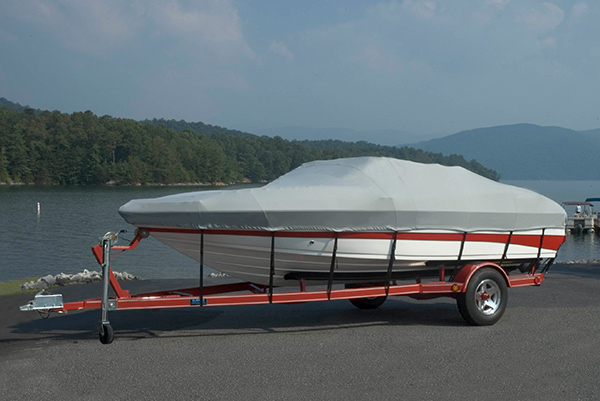When it comes to protecting your boat, the appropriate cover can make all the difference. If you're a seasoned sailor or a weekend boating enthusiast, understanding the details of boat covers is essential for safeguarding your investment. In this complete guide, we will explore the multitudinous types of boat covers that you can find, how to maintain them, and tips to ensure they remain durable, providing your vessel with the maximum protection against the elements.
From the strong rays of the sun to unexpected rain showers, boat covers play a key role in maintaining the condition of your boat. Not only do they shield your boat from structural damage, but they also prevent the buildup of mold and mildew, which can be harmful to both the aesthetics and integrity of your vessel. Join us as we investigate the complete guide to choosing the appropriate boat cover, spotlighting key features to look for, and highlighting the common mistakes boat owners make to help you choose wisely for your boating needs.
Determining the Right Boat Cover
Choosing the appropriate boat cover is essential for protecting your investment from the weather and maintaining its lifespan. The first step in this procedure is identifying the unique needs of your boat. Think about the type of boat you own, whether it's a sport boat, a sail vessel, or a motorboat, as each type may demand a distinct style of cover. Additionally, consider where you will be using the boat and the weather conditions it will face, such as exposure to sun, precipitation, or snow.
Once you have a clear understanding of your boat's needs, you can examine the materials available for boat covers. Popular materials include fabric, polyester, and composite materials, each providing varying levels of durability, water resistance, and UV protection. The canvas material tends to be more durable and offers good protection against UV rays, while polyester is often lighter and more water-resistant. Weighing the pros and cons of each material will help inform your decision based on your individual needs and budget.
Finally, ensure you pick a cover that suits your boat properly. This involves not only choosing the right size but also considering whether a custom or standard cover is best for you. Tailored covers can provide a perfect fit, while standard covers may help you save money but could lack effectiveness in protection. Measuring your boat correctly is a key step in this process, as a poorly fitting cover can lead to damage, compromising the level of protection you aim to achieve.
Maintenance and Maintenance for Boat Covers
To ensure your cover for your boat has a extended lifespan, consistent care and attention are important. Start by cleaning your cover often to remove debris, salinity, and mildew that can compromise the canvas over time. Use a soft brush and gentle soap with water to softly scrub the fabric. Rinse thoroughly to avoid soap residue, which can attract additional grime. Allow the cover to fully dry before putting away it to prevent mildew growth.

Inspect your cover consistently for signs of deterioration. Look for frays, pulls, and any punctures that may have occurred. Fixing these issues swiftly can prevent additional harm. For light repairs, use a specific fabric patch kit that is matching with the fabric material. Regularly check the ties and tie-downs as well, confirming they remain secure and in good condition to prevent moving while in transit.
When storing your boat cover, follow proper methods to maintain its form and integrity. Instead of wrapping, carefully roll the cover to reduce wrinkles and possible harm. Store it in a cool area away from direct sunlight, which can deteriorate materials over time. If your cover is weatherproof, verify that this feature remains functional by periodically checking for water entry and applying waterproofing solutions as required. Taking these measures can greatly lengthen the life of your boat cover, keeping your vessel protected for a long time.
Common Mistakes and Advice for Safeguarding
One common mistake boat operators make is failing to adequately fastening their covers. A loose cover can flap in the wind, which may lead to deterioration not only to the cover but also to the boat as well. To ensure optimal protection, use fastening straps or bungee cords that are specifically made for boat tarps. This will help to maintain the cover in place even during in winds and prevent possible wear and tear caused by movement.
A different critical oversight is failing to clean and maintain the boat cover regularly. Dirt, debris, and moisture can accumulate, leading to mold and mildew growth, which can damage the material over time. Regular maintenance, including a gentle cleaning with appropriate soaps and rinsing well, can extend the life of your cover. Additionally, consider applying Helpful site that enhances the waterproof and UV-resistant properties of the cover.
Lastly, many boat operators overlook the significance of reviewing the weather forecast prior to storing their boats. Extreme weather conditions, including heavy rain or snow, can take a toll on unprepared covers. For added protection, investing in a premium all-season cover or using a tarp in conjunction with your primary cover during extreme weather can provide extra safeguards. Staying aware and proactive about environmental changes ensures your boat remains secure and protected throughout the year.
